One Slide to Rule Them All
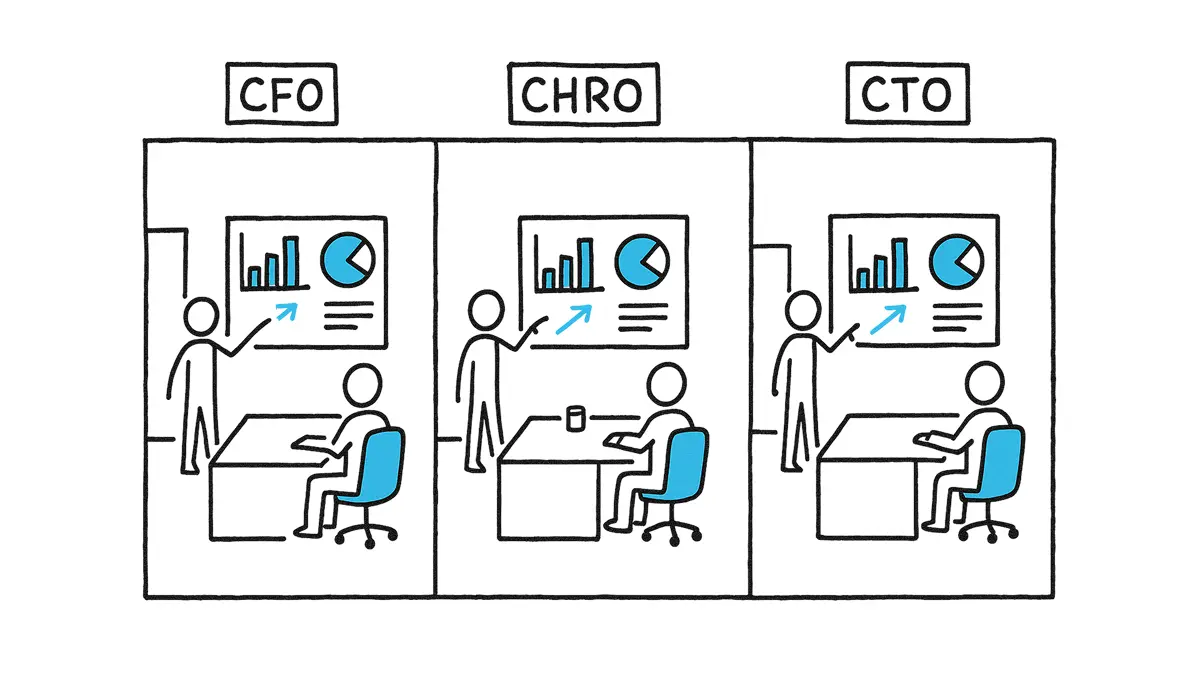
The office doesn’t have walls anymore, but our data sure does. HR tracks people, IT monitors systems, and CRE manages space. And somehow, they still don't always talk to each other.
I recently moderated a webinar for Modo Labs called “Workplace (Experience) Without Walls: Redefining Data Across Departments,” to tackle this problem head-on.
The goal wasn't to discover whether silos exist (they do), but to understand why they persist and how leaders can overcome them.
We validated patterns in my “listening lab” report, such as the 24% decline in strategic vision clarity among workplace leaders, and revealed what happens when organizations commit to breaking down these barriers.
Lead Across the Lines of Modern Work with Phil Kirschner
Over 22,000 professionals follow my insights on LinkedIn.
Join them and get my best advice straight to your inbox.
My Silo-Busting EX Panelists
To explore these challenges, I engaged Mitchell Bobman of Northern Trust, a rare technologist embedded in corporate real estate; Jennifer Hewit of Truist, an end-user tech and support expert (and my former Credit Suisse colleague); and Allison Kinney of Metropolis Technologies, who leads employee experience and workplace from the HR side.
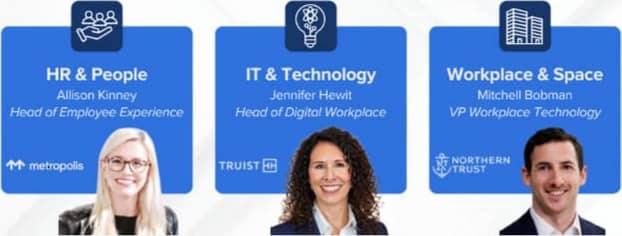
The intention for the session was to discuss a few difficult questions, e.g.:
- Who owns employee experience when no single team does?
- Why do silos persist even after reorganizations?
- How is data helping or hurting with cross-functional collaboration?
Their answers went far beyond typical "break down silos" advice.
A “Page One” Breakthrough
My favorite actionable insight was inspired by Jennifer, who expressed frustration about not having all teams working on EX in one organization. I’ve suggested that a Chief of Work could solve this one day but, in the meantime, I asked if HR, IT, and Real Estate might literally use the same first slide in every executive presentation about EX?
The detail of what you're doing in IT will always be different than HR or Real Estate. But what if page one were always the same, so that all of our respective bosses keep hearing that over and over and see that we're stacking hands?
Jennifer saw the opportunity:
If we bring those conversations together, it's far more powerful. If I'm sharing retention data, but not talking about the office refresh or desk setup strategies, part of the conversation may be lost.
This connects to my belief in the power of a “North Star” vision. When teams tell fragmented stories instead of unified strategies, executives can't make coherent investment decisions about EX.
🚨 We must coordinate the narrative before coordinating the work.
👀 It's event season! Where will I see you IRL? 👀
- WorkSpaces | October 5-7 | Napa Valley ✈️ | Speaking 🎤
- Charter | October 14 | New York City | Learning
- CoDesign | October 21 | San Francisco ✈️ | Speaking 🎤
- Tradeline | October 22-23 | San Diego ✈️ | Speaking 🎤
The Data Challenge
The webinar revealed that while departments aren't necessarily territorial about their data, some common structural barriers prevent sharing.
Resource Imbalance
Mitchell provided the bluntest assessment of why real estate teams struggle with integration:
Unfortunately, real estate usually gets the short end of the stick when it comes to technology resources, so I have to find solutions architects and engineers to help us out with data pipelines.
The disparity between digital transformation support and success can force competition rather than collaboration.
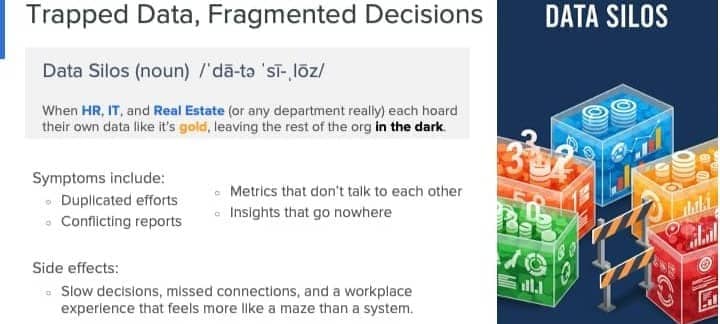
Translation Problems
Curiosity aside, Allison had another reason we struggle to measure EX:
If you asked finance and others to analyze the same data, you would get five different answers. We're speaking different languages, and we need people who are devoted to be able to give us those insights.
For example, Mitchell's team has rich spatial data, but those insights can remain trapped within CRE rather than informing broader EX strategies.
The Integration Opportunity
All three panelists were motivated to share and curious about what their respective departments could contribute. Allison explained the potential:
HR can identify short tenure, but maybe that had something to do with a technical snafu within your first few weeks, which made you disengage. There are so many little micro points that, if we actually banded together, could be built into a true EX insights machine.
Jennifer said a mindset shift is required:
I don't believe anyone owns experience, I think we're all responsible. And when we put that as our primary objective, the conversation changes because we're not all battling each other, we're actually focused on a shared outcome and a purpose.
The Modern Work O/S
During my introduction, I shared the idea of an “operating system” for modern work, where all factors influencing EX are accessible in one place. The icons on this page already exist in every organization. What’s missing is the discipline and courage to connect.
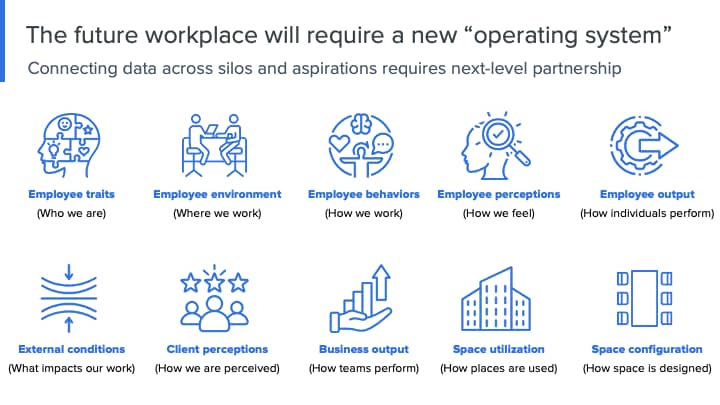
Allison said her team is already using AI to deliver a “remarkable” parking experience—and the same capacity to ingest and analyze cross-functional data could transform how we measure and improve EX itself.
AI can surface new insights, spot patterns, make decisions, and act faster, so leaders have more time to focus on the human elements of working.
The solution requires systems and specialists to translate cross-functional metrics into shared organizational intelligence, with AI helping to spot patterns faster while leaders keep decisions grounded in human judgment.
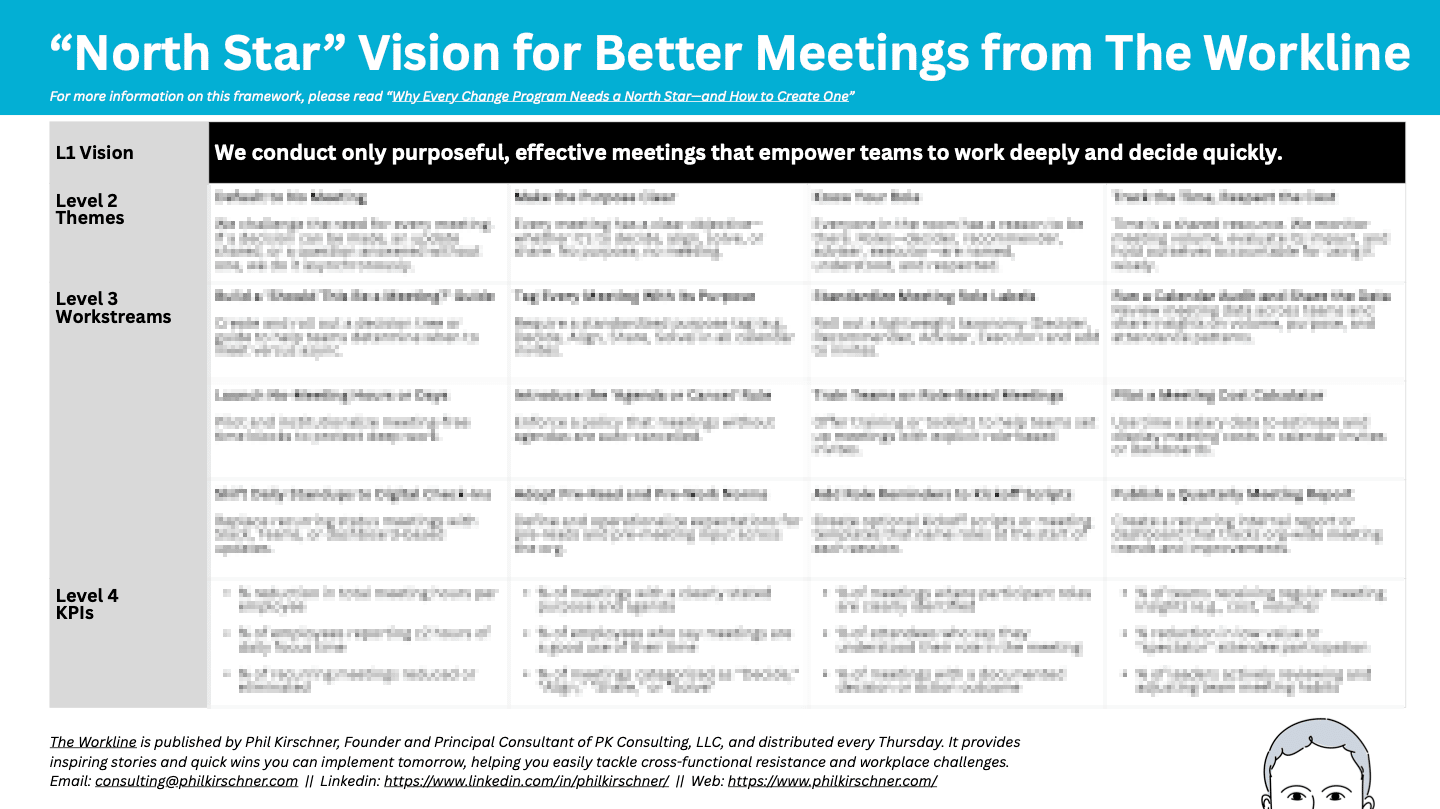
⭐️ Example "North Star" Vision ⭐️
This free guide shows a vision, guiding themes, and measurable initiatives for better meetings. A similar framework can help improve EX!
🎥 Secret Location Interview Finally Live! 🎥
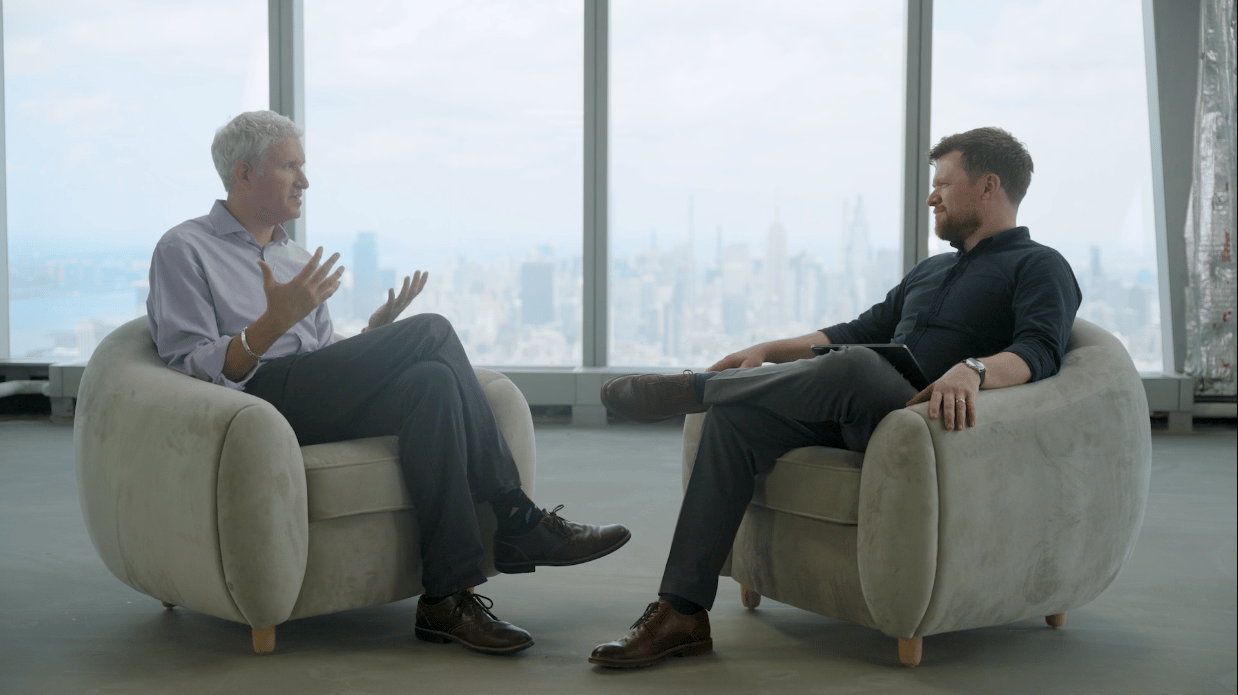
A few weeks ago, I challenged readers to guess where I had been filmed for an amazing interview. The answer was a raw space at the top of One World Trade Center, for LoopNet's new "In the Loop" podcast. The episode is finally live. You can watch or listen on the platform of your choice.
The Hidden Friction Crisis
Beyond data challenges, Jennifer shared an insidious problem: invisible employee frustrations that do not show up in most dashboards.
"New employees may call IT at least three times within their first seven days, but there are also employees who are suffering in silence."
We cannot assume employees will always report issues, so we must listen more effectively to prevent systematic erosion of trust.
Mitchell shared a workplace example I know well: workers struggling with space booking systems often "make do" vs. reporting problems.
There are a lot of false positives and false negatives in reservation-based environments, which add friction and negative experiences in daily onboarding. When an employee arrives for the day, they may see desks that are reserved but unoccupied, and desks that are supposedly free with a coworker sitting there.
And nobody wants to start their day by confronting coworkers.
What Leaders Must Do Now
Cross-functional EX requires specific structural commitments:
- Align the narrative: Mandate that HR, IT, and CRE present identical first slides about EX strategy to leadership
- Invest in data translation: Hire cross-functional data scientists to convert siloed metrics into shared organizational intelligence
- Match authority to accountability: Give EX leaders budget influence across traditional boundaries
- Build proactive listening: Deploy technologies that identify problems before employees report them
Your next step: Convene your HR, IT, and CRE leaders for a 90-minute session to create that shared first slide. Test whether they can agree on unified EX outcomes, metrics, and necessary behaviors. Imagine your new Chief of Work had to approve it.
If they can’t align on one slide, you’ll know exactly why your EX strategy isn’t working, and which silos you’ll need to break to fix it.

Lead Across the Lines of Modern Work with Phil Kirschner
Over 22,000 professionals follow my insights on LinkedIn.
Join them and get my best advice straight to your inbox.


